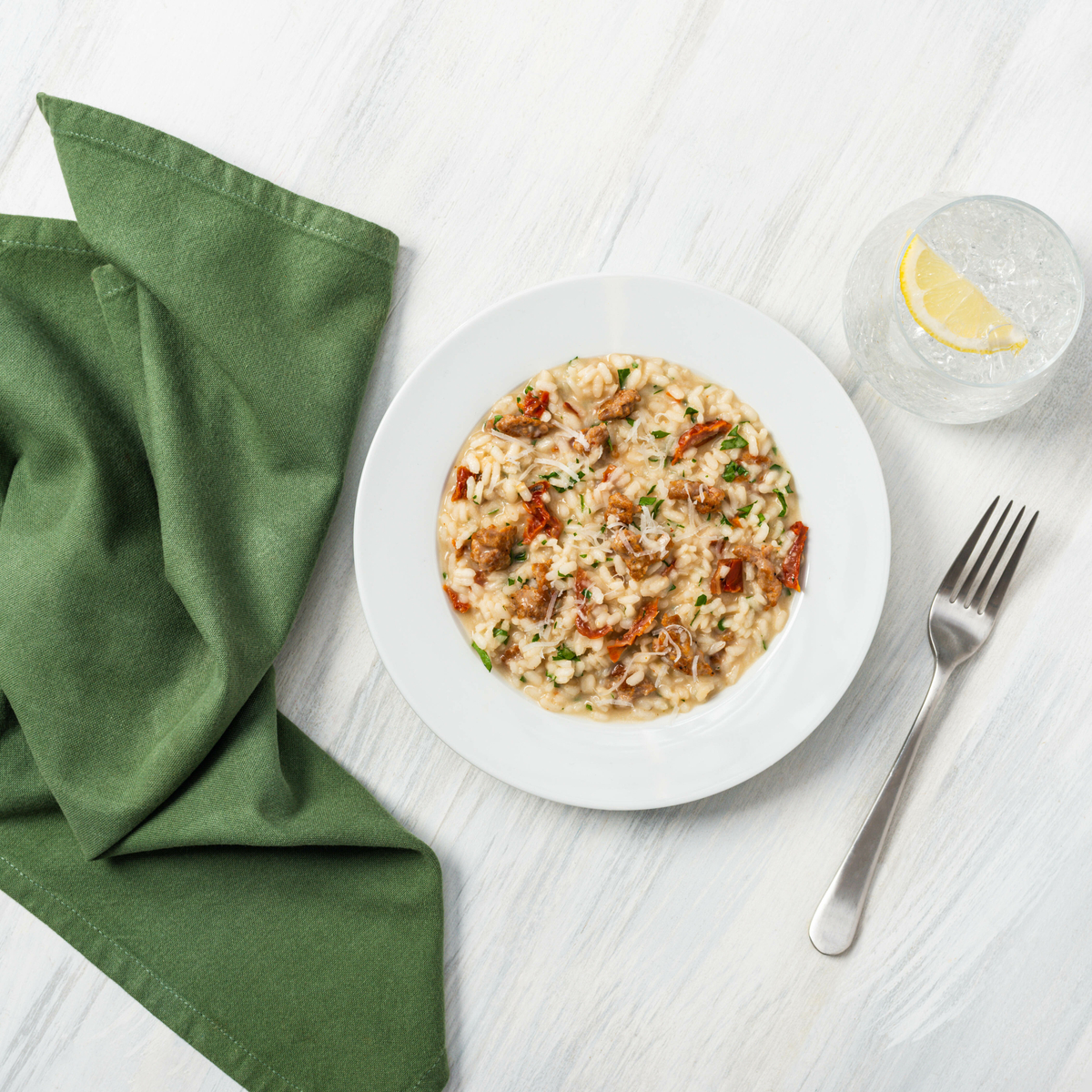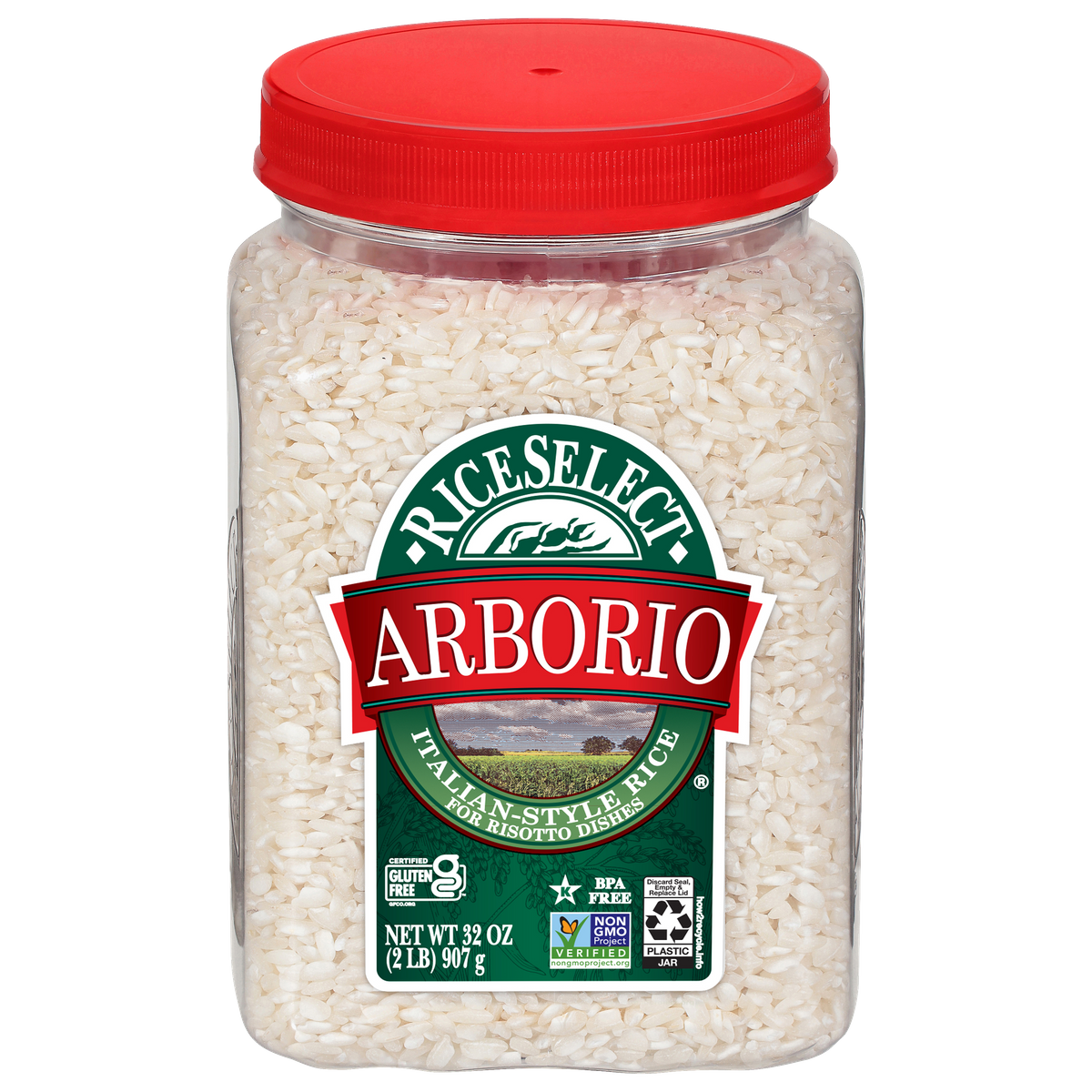Ingredients
Instructions
- Heat water and broth in 2 quart saucepan over medium heat until it comes to a simmer. Reduce heat to low and keep warm.
- Meanwhile, heat 2 tablespoons olive oil in large saucepan over medium heat; add sausage and cook until browned. Drain on paper towels; set aside.
- Heat remaining 2 tablespoons olive oil over medium heat; add shallot and garlic and cook until soft.
- Add rice and stir 2 to 3 minutes. Add wine; stir until absorbed. Increase heat to medium-high; stir in 1 cup water-broth mixture.
- Cook uncovered, stirring frequently, until liquid is absorbed. Continue stirring and adding remaining water-broth mixture, 1 cup at a time, allowing each cup to be absorbed before adding another. Cook until rice is tender and mixture has a creamy consistency, approximately 25 to 30 minutes.
- Stir in sausage, sun-dried tomatoes, cream, cheese and parsley. Stir until mixture is creamy, about 2 to 3 minutes.
Cooking with Shallots
The shallot, an onion family member, has a mild, sweet flavor that is reminiscent of the offspring of an onion and garlic. Shallots, which are frequently mistaken for scallions, are very different. The shallot is an oblong-shaped bulb with papery skin that is copper in color. When a recipe only calls for a small bit of onion or shallot, the white or purple-tinted flesh underneath, which is separated into cloves that resemble garlic, is the perfect substitute. You can remove one clove and save the others for another time. The shallot is a common ingredient in French cooking, despite its image as a fancy aromatic. It is inexpensive, simple to use, and tasty in a wide range of dishes.Shallots are typically grouped with the onions and garlic in most large supermarket stores. Since they can substitute for garlic, onions, or even scallions in a pinch, they are a practical and durable pantry essential to keep on hand.
Shallot Cooking Tips
To prepare a shallot for cooking, cut the ends off of the shallot and peel away the skin. Then separate the cloves and then chop the shallot according to the recipe (finely, medium chop, etc.).
Despite the fact that shallots caramelize similarly to onions, it's crucial to sauté them gently. Shallots are liable to become bitter if they are browned at high heat, just like garlic.
Shallots are cooked in their skins until they are tender. After that, peel, purée, and flavor sauces or soups with it.
You can use onions or scallions in place of shallots, but the flavor will be stronger. Leeks will taste more like shallots than garlic.
Shallots shouldn't be refrigerated because of the tendency of cold temperatures to promote sprouting. If you just use a portion of a shallot, you may preserve the leftover portion in the refrigerator by wrapping it in plastic wrap or a zip-top bag.
Try some shallots in our: Seared Scallop Duxelle Parmesan Risotto.
More Mediterranean Meal Ideas
If you are craving more Mediterranean meal ideas, take a look at one of our Pearl Couscous recipes.



